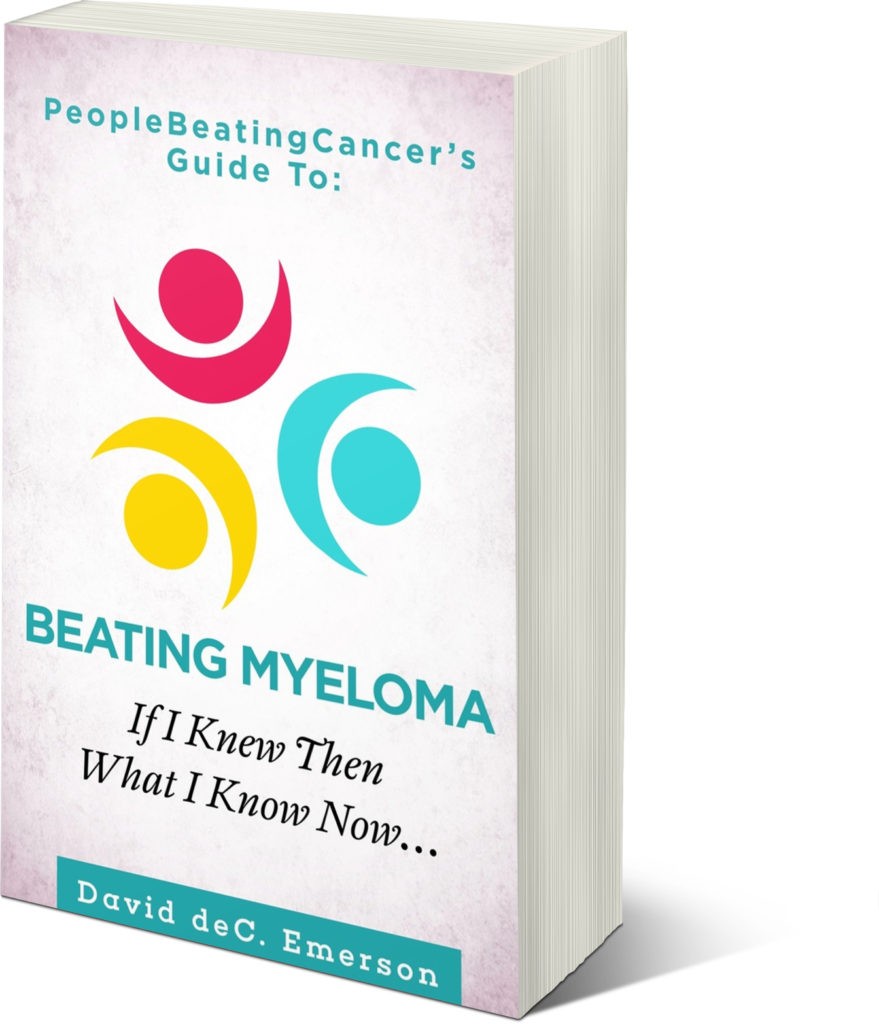
Diagnosed with SMM, SPB, or MGUS?
Learn how you can stall the development of full-blown Multiple Myeloma with evidence-based nutritional and supplementation therapies.
Click the orange button to the right to learn more.
- You are here:
- Home »
- Blog »
- Pre-Myeloma »
- Increasing free light chain ratio?
Increasing free light chain ratio?

“While FLC ratio ≥100 is associated with a high risk of progression in patients with Smoldering Myeloma, it does not infer an imminent risk of progression…”
Hi David- I was diagnosed with Smoldering Myeloma (SMM) 18 months ago. I fit many of the things you describe & now, because my plasma levels were high, when tested 18 months ago & now my Kappa, Lambda ratio (freelight chain ratio) has gone over 100, to 114, after ranging between 45 & 98, for the past 18 months, the haematologist says it’s time to start the treatment that will lead up to a stem cell transplant.
The fact is that since my diagnosis of SMM, I’ve never felt better after
- going on a plant based,
- no gluten or
- dairy diet,
- I lost 10kg’s in 4 months.
Have continued with my fitness program & have had a cracker year on the bike, my first as a grand master (60+) athlete.
No symptoms whatsoever & the second CT scan I’ve just had, show, like the last one 18 months ago, no lesions on the bone at all.
Would really appreciate your input re how I can best benefit from your knowledge the best way forward for me. NOT keen on mainstream medication. Kind Regards Constance
Dear Constance,
- The conventional therapy plan. Once you are formally diagnosed with MM and begin treatment, you will undergo induction (RVd- 4-6 courses) an autologous stem cell transplant and probably low-dose maintenance therapy.
- The non-conventional therapy plan. You can choose to pursue anti-angiogenic foods and supplements as well as lifestyle therapies shown to reduce your risk of a MM diagnosis.
- A combination of conventional and non-conventional therapy plan. Undergo non-conventional therapies discussed in #2 but also undergo conventional induction therapies, at least until you achieve remission. Research confirms that you will respond well, with less toxicity (chemo) because you are early MM (less cancer burden) and you have been “pre habilitating.”
- MM Survivor
- MM Cancer Coach
- Director PeopleBeatingCancer
Recommended Reading:
- Single Plasmacytoma, MGUS or SMM? To treat or watchful waiting
- Smoldering Multiple Myeloma-Delay Treatment Until Progression!
- Risk of Progression for Smoldering Multiple Myeloma is Reduced…at what cost?
Evaluating serum-free light chain ratio as a biomarker for multiple myeloma.
“Background: In 2014, the definition of multiple myeloma was updated to include serum free light chain (FLC) ratio ≥100 as a myeloma defining biomarker, based on retrospective data indicating a 2-year progression rate of 80% and a median time to progression (TTP) of 12 months associated with this marker.
However, two recent studies have reported lower 2-year progression rates, 30-44%, and longer median TTP of 40 months in patients with FLC ratio ≥100.
Because of the disparity in risk prediction by FLC ratio across studies, we were motivated to assess the risk of progression in patients with SMM and a FLC ratio ≥100.
Methods: We performed a retrospective analysis of patients diagnosed with SMM at Memorial Sloan Kettering Cancer Center between January 2000 and December 2017. Diagnosis of SMM and progression to MM was defined according to the International Myeloma Working Group (IMWG) criteria at the time of diagnosis. Kaplan-Meier method was used to assess TTP and generate survival curves, with log-rank test for comparison between groups.
Results: A total of 438 patients were included in the study, with a median follow-up time of 52 months. While all patients with a FLC ratio ≥100 (n = 66) had elevated involved FLC levels, 35 (53%) had an involved FLC concentration > 100 mg/L.
Per current diagnostic criteria, we only included patients with an involved FLC concentration > 100 mg/L in the FLC ratio ≥100 group, and found a median TTP of 31 months (95% confidence interval [CI] 16-59 months) and a 2-year progression rate of 49% (CI 28-63%).
In a sensitivity analysis including all 66 cases with FLC ratio ≥100 (independent of involved FLC concentration), we found the median TTP to be 41 months (CI 30-72 months), compared to 101 months for those with a FLC ratio < 100 (CI 78-127 months; p < 0.0001).
The risk of progression within 2 years was 35% (CI 22-46%) compared to 18% (CI 14-23%; p < 0.0001). Of note, 22 patients with a FLC ratio ≥100 were monitored expectantly for > 4 years, among whom 12 patients had an involved FLC level > 100 mg/L. Ten patients (7 with involved FLC level > 100 mg/L) were followed over a period ranging from 4 to 8.5 years before eventually progressing, and 12 patients (5 with involved FLC level > 100 mg/L) were followed between 4 and 8 years and did not progress during the study period.
Conclusions: While FLC ratio ≥100 is associated with a high risk of progression in patients with SMM, it does not infer an imminent risk of progression, defined by the IMWG as median TTP of 12 months and 2-year progression rate of at least 80%. On the contrary, select patients with FLC ratio ≥100 can be followed for many years without progressing and some may never progress despite long-term follow-up. These findings suggest that in patients where FLC ratio ≥100 is the only myeloma-defining event, other high-risk features as well as the evolution of FLCs over time should be considered in the decision to start a patient on treatment.


